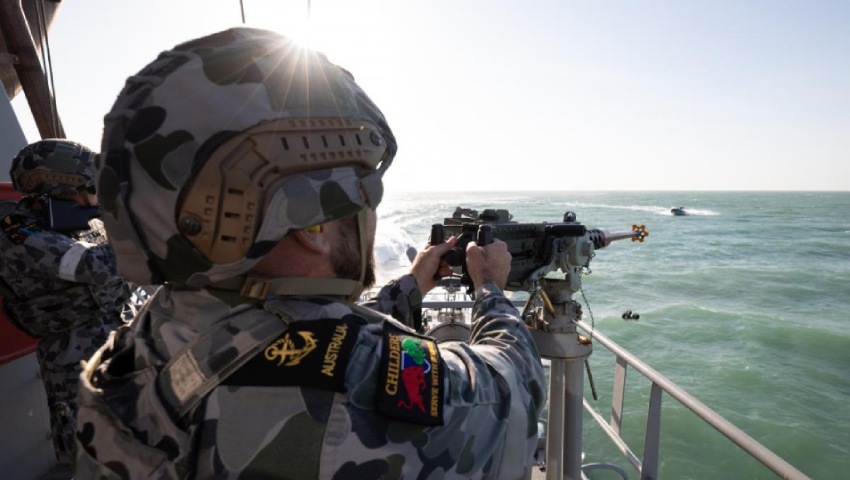Armidale Class patrol boats have conducted surface gunnery and close-quarter exercises in the Top End in a bid to hone interoperability skills.
To continue reading the rest of this article, please log in.
Create free account to get unlimited news articles and more!
HMA Ships Childers, Launceston, Glenelg and Wollongong put their warfighting skills to the test near their home port of Darwin.
The vessels engaged in surface gunnery, close-quarter manoeuvring, degraded navigation, formation pilotages and anchorages in a bid to improve inshore manoeuvring and force protection as part of the Patrol Boat Concentration Period.
This included a ‘breakout’ of Darwin Harbour under a simulated maritime threat ahead of amphibious assault ship HMAS Canberra and frigate HMAS Anzac, which set sail from Darwin for regional deployment.
“Navy is advancing through the development of self-supported and sustainable maritime task groups capable of accomplishing the full spectrum of maritime security operations,” Captain Patrol Boats Captain Melanie Verho said.
"Armidale Class patrol boats are highly capable and versatile minor war vessels, able to undertake a wide variety of tasks, in conjunction with other government agencies, contributing not only to civil maritime security operations, but to Navy’s warfighting mission.
“While the primary role of these vessels is to support border protection operations, they bring a unique set of capabilities, supporting task group operations, including close-range defence, littoral manoeuvre, scouting and surface warfare.”
Commanding Officer of HMAS Childers, Lieutenant Commander Simone Paterson, who planned the exercise, noted the evolving role of patrol boats in military operations.
“Patrol boats normally operate alongside Border Force, Australian Fisheries and the Australian Federal Police in a constabulary role, however, the Patrol Boat Concentration Period allows us to practise the warfighting aspect of our role we don’t see as often in our day-to-day taskings,” LCDR Paterson said.
The task group leveraged remote control and semi-autonomous targets provided by Defence contractor L3Harris, which provided realistic practise simulating fast inshore attack crafts for close-range co-ordinated gunnery.
“It was the first time we’ve been able to conduct this sophisticated coordinated gunnery, protecting a simulated high-value unit with our 25mm M142 bushmaster autocannons,” LCDR Paterson added.
The vessels also operated and co-ordinated together in a clandestine posture.
“Patrol boats can operate incognito when we want to – we can conduct ‘silent’ navigation, where we switch off a lot of our emitters and sensors, including radar and GPS, to hide,” LCDR Paterson noted.
“We can navigate and operate around the world in this way, which allows us to support maritime task group operations quite effectively.”
[Related: Upgraded HMAS Warramunga completes first deployment]

 Login
Login







